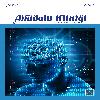Rockwood Tip III Akromiyoklaviküler Eklem Çıkıklarının Cerrahi Tedavisinde Modifiye Bosworth ve Endobutton Tekniklerinin Karşılaştırılması
A Comparison of the Modified Bosworth and Endobutton Techniques in the Surgical Treatment of Rockwood Type III Acromioclavicular Joint Dislocations
___
- 1. Collins DN. Disorders of the acromioclavicular joint. In: The Shoulder (vol. 4), 4. ed. Philadelphia: Saunders Elsevier; 2009.
- 2. Rockwood CA Jr.., Williams GR, Young DC. Injuries to the acromioclavicular joint. In: Rockwood CA Jr., Green DP, Bucholz RW, Heckmen JD (ed.), Rockwood and Green’s Fractures in Adults (vol. 2), 4. ed. Philadelphia: JB Lippincott-Raven; 1996:1341–413.
- 3. Lancaster S, Horowitz M, Alonso J. Complete acromioclavicular separations. A comparison of operative methods. Clin Orthop Relat Res. 1987;(216):80–8.
- 4. Salem KH, Schmelz A. Treatment of Tossy III acromioclavicular joint injuries using hook plates and ligament suture. J Orthop Trauma. 2009;23:565–9.
- 5. Bargren JH, Erlanger S, Dick HM. Biomechanics and comparison of two operative methods of treatment of complete acromioclavicular separation. Clin Orthop Relat Res. 1978;(130):267–72.
- 6. Fukuda K, Craig EV, An KN, Cofield RH, Chao EY. Biomechanical study of the ligamentous system of the acromioclavicular joint. J Bone Joint Surg. 1986;68:434–40.
- 7. Deshmukh AV, Wilson DR, Zilberfarb JL, Perlmutter GS. Stability of acromioclavicular joint reconstruction: biomechanical testing of various surgical techniques in a cadaveric model. Am J Sports Med. 2004;32:1492–8.
- 8. Grutter PW, Petersen SA. Anatomical acromioclavicular ligament reconstruction: a biomechanical comparison of reconstructive techniques of the acromioclavicular joint. Am J Sports Med. 2005;33:1723–8.
- 9. Wei HF, Chen YF, Zeng BF. Triple endobuttton technique for the treatment of acute complete acromioclavicular joint dislocations: preliminary results. Int Orthop. 2011;35(4):555–9.
- 10. Schlegel TF, Burks RT, Marcus RL, Dunn HK. A prospective evaluation of untreated acute grade III acromioclavicular separations. Am J Sports Med. 2001;29:699e703.
- 11. Smith TO, Chester R, Pearse EO, Hing CB. Operative versus non-operative management following Rockwood grade III acromioclavicular separation: a meta-analysis of the current evidence base. J Orthop Traumatol. 2011;12:19e27.
- 12. Press J, Zuckerman JD, Gallagher M, Cuomo F. Treatment of grade III acromioclavicular separations. Operative versus nonoperative management. Bull Hosp Jt Dis. 1997;56:77–83.
- 13. Tauber M. Management of acute acromioclavicular joint dislocations: current concepts. Arch Orthop Trauma Surg. 2013;133:985e995.
- 14. Takase K, Yamamoto K. Changes in surgical procedures for acromioclavicular joint dislocation over the past 30 years. Orthopedics. 2013;36:1277e1282.
- 15. Harris RI, Wallace AL, Harper GD, Goldberg JA, Sonnabend DH, Walsh WR. Structural properties of the intact and there constructed coracoclavicular ligament complex. Am J Sports Med. 2000;28:103–8.
- 16. Assaghir YM. Outcome of exact anatomic repair and coracoclavicular cortical lag screw in acute acromioclavicular dislocations. J Trauma Acute Care Surg. 2011;71:50e54.
- 17. Pavlik A, Csépai D, Hidas P. Surgical treatment of chronic acromioclavicular joint dislocation by modified Weaver–Dunn procedure. Knee Surg Sports Traumatol Arthrosc. 2001;9:307–12.
- 18. Bektaşer B, Bozkurt M, Öçgüder A, Solak Ş, Oğuz T. Tip III akromiyoklaviküler eklem çıkıklarının modifiye Bosworth tekniği ile cerrahi tedavisi. Ulus Travma Acil Cerrahi Derg. 2004;10:245–9.
- 19. Bhattacharya R, Goodchild L, Rangan A. Acromioclavicular joint reconstruction using the Nottingham Surgilig: a preliminary report. Acta Orthop Belg. 2008;74:167–72.
- 20. Bannister GC, Wallace WA, Stableforth PG, Hutson MA. The management of acute acromioclavicular dislocation. A randomized prospective controlled trial. J Bone Joint Surg. 1989;71:848–50.
- ISSN: 2149-5254
- Yayın Aralığı: Yılda 3 Sayı
- Başlangıç: 1933
- Yayıncı: Hayat Sağlık ve Sosyal Hizmetler Vakfı
Zekeriya Okan Karaduman, Zafer Orhan, Yalçın Turhan, Mehmet Arıcan, Erdem Değirmenci, Ozan Turhal
Kişisel Verilerin Klinik Araştırmalarda Kullanımına İlişkin Yasal Düzenlemeler
Hilal İlbars, Berna Terzioğlu Bebitoğlu
Ramazan Orucunun Vasküler Retina ve Ön Kamara Parametrelerine Etkisi
Mustafa Doğan, Mehmet Cem Şabaner, Mehmet Akif Erol
Süheyla Gonca, Yusufhan Yazır, Sevilay Erimşah, Aysel Kükner, Bülent Duran
Seval BAYRAK, Gülbahar USTAOĞLU, Gözde SERİNDERE, Hüsniye DEMİRTÜRK KOCASARAÇ
Derin Boyun Enfeksiyonunda Nadir Bir Bakteri: Streptococcus anginosus
Dezenfektanların Yeni Jenerasyon Monofazik Ölçü Materyallerinin Boyutsal Stabilitesine Etkisi
Mustafa Hayati Atala, Hülya Çetin, Elif Yegin, Kubra Degirmenci
Gülbahar Ustaoğlu, Seval Bayrak, Gözde Serindere, Hüsniye Demirtürk Kocasaraç
